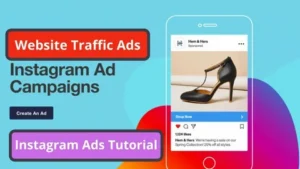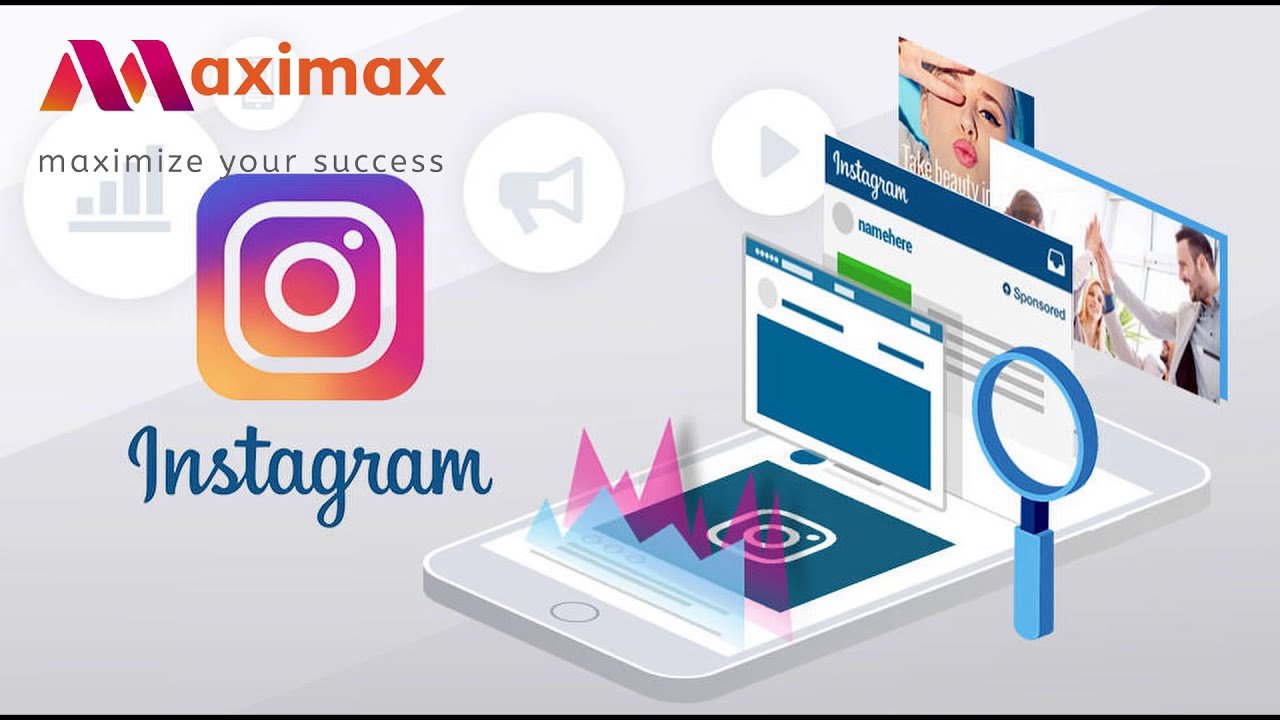Introduction
How to advertise on Instagram :Advertising on Instagram is a powerful way to reach over 2 billion monthly active users, making it a prime platform for businesses to boost brand awareness, engagement, and sales. However, many businesses struggle to create effective Instagram ad campaigns due to a lack of understanding of the platform’s tools, targeting options, or best practices. This guide breaks down the problem of advertising on Instagram, identifies common challenges, and provides actionable steps to resolve them. Through real-world examples, prevention tips, and clear next steps, you’ll learn how to create high-performing Instagram ads that drive results.
Breaking Down the Problem
Advertising on Instagram can be complex due to several components. Below are the key areas where businesses often face challenges:
-
Account Setup: Not having a business account or properly linking it to a Facebook Ads Manager.
-
Objective Selection: Choosing the wrong campaign objective (e.g., brand awareness vs. conversions) for business goals.
-
Audience Targeting: Failing to define or reach the right audience, leading to low engagement or wasted ad spend.
-
Ad Creative: Using low-quality visuals, unclear messaging, or ineffective calls-to-action (CTAs).
-
Budget and Scheduling: Misallocating budgets or not optimizing ad schedules for maximum reach.
-
Performance Tracking: Not monitoring or analyzing ad performance to improve results.
-
Compliance and Best Practices: Violating Instagram’s ad policies or ignoring platform-specific strategies.
Common Causes
-
Lack of Knowledge: Businesses new to Instagram may not understand how to use Ads Manager or leverage Instagram’s features.
-
Poor Planning: Rushing campaigns without clear goals, audience research, or a content strategy.
-
Inadequate Resources: Limited budgets, low-quality visuals, or lack of tools for analytics and scheduling.
-
Algorithm Misunderstanding: Not aligning content with Instagram’s algorithm, which prioritizes engagement and relevance.
-
Neglecting Organic Efforts: Focusing solely on paid ads without building an organic presence to complement campaigns.
Consequences of Not Addressing the Issue
-
Wasted Budget: Ineffective targeting or poor creatives can lead to high costs with little return on investment (ROI).
-
Low Engagement: Ads that don’t resonate with audiences result in low likes, comments, or shares, reducing visibility.
-
Brand Damage: Poorly designed or irrelevant ads can harm brand perception or violate platform policies, risking account suspension.
-
Missed Opportunities: Failing to tap into Instagram’s massive audience can limit brand growth and sales potential.
-
Competitive Disadvantage: Competitors with strong Instagram ad strategies may capture your target market.
Actionable Step-by-Step Instructions
Step 1: Set Up a Business Account

A professional Instagram account is essential for advertising.
-
Action: Convert your personal account to a business or creator account.
-
Go to your Instagram profile, tap the menu (three lines), select Settings and Privacy, then Account type and tools, and choose Switch to professional account.
-
Select a category (e.g., Retail, Blogger) and add contact details.
-
-
Link to Facebook: Connect your Instagram account to a Facebook Page via Settings > Accounts Center in the Instagram app or Facebook Ads Manager.
-
Tools Needed: Instagram app, Facebook account.
-
Why It Works: A business account unlocks analytics (Insights), advertising tools, and CTAs like “Shop Now.”
Step 2: Define Campaign Objectives
Align your ad goals with your business objectives.
-
Action: Choose an objective in Meta Ads Manager:
-
Awareness: Increase brand visibility.
-
Traffic: Drive website or app visits.
-
Engagement: Boost likes, comments, or messages.
-
Leads: Collect customer information.
-
Sales: Promote purchases via Instagram Shops or websites.
-
Navigate to Ads Manager > Create > Choose Objective.
-
-
Tip: For e-commerce, select “Sales” to optimize for conversions; for new brands, use “Awareness” to build recognition.
-
Tools Needed: Meta Ads Manager (web or mobile).
Step 3: Target Your Audience
Reach the right people by defining your audience.
-
Action:
-
In Ads Manager, go to Ad Set > Audience.
-
Use Detailed Targeting to select demographics (age, gender, location), interests (e.g., fashion, fitness), and behaviors (e.g., frequent travelers).
-
Create Custom Audiences by uploading customer lists or retargeting website visitors using Meta Pixel.
-
Use Lookalike Audiences to find users similar to your existing customers.
-
-
Tip: Start with broad targeting to let Instagram’s algorithm optimize, then refine based on performance.
-
Tools Needed: Meta Pixel (for website tracking), customer data for custom audiences.
Step 4: Create Compelling Ad Content
Design visuals and copy that grab attention.
-
Action:
-
Formats: Choose Single Image, Video, Carousel (up to 20 images/videos), or Story Ads. Use 1,200x628px for feed ads and 1,080×1,920px for Stories.
-
Visuals: Use high-quality images or videos with soft natural lighting (e.g., near a window or during golden hour). Edit with Instagram’s built-in tools or apps like Canva or Adobe Express.
-
Copy: Write concise captions with a clear CTA (e.g., “Shop Now,” “Learn More”). Include hashtags (3-5 relevant ones) and geotags for discoverability.
-
Example CTA: “Tell us your favorite product in the comments! 👇”
-
-
Tip: Test multiple hooks (first 3 seconds of video ads) to stop the scroll.
-
Tools Needed: Canva, Adobe Express, Instagram’s editing tools.
Step 5: Set Budget and Schedule
Optimize your ad spend and timing.
-
Action:
-
In Ads Manager, go to Ad Set > Budget & Schedule.
-
Choose Daily or Lifetime budget (start with $5-$10/day for testing).
-
Schedule ads for peak audience activity (e.g., evenings or weekends) using Advanced Options.
-
Select Manual Placements and check Instagram to ensure ads appear only on Instagram.
-
-
Tip: Use “Accelerated” delivery for time-sensitive campaigns like flash sales.
-
Tools Needed: Meta Ads Manager, Instagram Insights for audience activity times.
Step 6: Monitor and Optimize Performance
Track results to improve ROI.
-
Action:
-
Use Meta Ads Manager > Campaigns to view metrics like reach, impressions, clicks, and conversions.
-
Install Meta Pixel on your website to track actions (e.g., purchases). Add UTM parameters to links for detailed analytics in tools like Google Analytics.
-
A/B test different visuals, CTAs, or audiences to identify top performers.
-
Adjust underperforming ads by refining targeting or updating creatives.
-
-
Tip: Aim for a reach rate (reach ÷ followers) above industry averages (e.g., 20-30% for small accounts).
-
Tools Needed: Meta Pixel, Google Analytics, Buffer’s UTM builder.
Step 7: Ensure Compliance and Best Practices
Avoid ad rejections and maximize effectiveness.
-
Action:
-
Review Instagram’s Ad Policies to avoid violations (e.g., no prohibited content like tobacco).
-
Use authentic, lighthearted captions with emojis to align with Instagram’s tone.
-
Incorporate trending audio in Reels or carousels to boost algorithmic reach.
-
-
Tip: Check Ads Manager > Categorize Your Ads for special categories (e.g., finance, housing) requiring extra compliance.
-
Tools Needed: Meta Ads Manager, Instagram’s Creator Studio.
Real-World Examples and Case Studies
Case Study 1: Speks (Fidget Toy Retailer)
-
Problem: Speks needed to increase sales of their squishy stress balls.
-
Solution: They ran a Reels ad showcasing the product in use with bright colors and a satisfying visual of squeezing the ball. The ad included a prominent “Shop Now” CTA button.
-
Results: The ad tapped into visual appeal and emotional connection, driving significant clicks and purchases.
-
Takeaway: Highlight product use in engaging formats like Reels to boost conversions.
Case Study 2: Mathieu Laca (Artist)
-
Problem: Low website traffic and brand awareness.
-
Solution: Mathieu followed Art Storefronts’ best practices, advertising his top-performing Instagram posts (images of top-selling art) with hashtags like #ArtLovers. He targeted North American users interested in visual arts.
-
Results: A 688% increase in website traffic and boosted social followers.
-
Takeaway: Boosting high-performing organic posts with targeted ads amplifies reach and engagement.
Case Study 3: Crocs (Footwear Brand)
-
Problem: Promoting a new product (Cozzzy Sandals) to a younger audience.
-
Solution: Crocs created a simple, pink-themed Stories ad with the product front and center and animated text appearing word-by-word. The ad included a “Shop Now” CTA.
-
Results: High engagement due to the ad’s simplicity and alignment with Instagram’s aesthetic.
-
Takeaway: Use Stories for visually appealing, concise ads with clear CTAs.
Prevention Tips for Future Success
-
Build an Organic Presence: Post high-quality content consistently (daily or near-daily) to grow followers and complement paid ads. Use tools like Sprout Social or Hootsuite for scheduling.
-
Stay Updated on Trends: Use social listening tools (e.g., Sprout Social) to spot trending audio, hashtags, or content types.
-
Leverage Influencers: Partner with micro-influencers (10K-100K followers) for authentic promotions. Tools like AspireIQ can streamline collaborations.
-
Optimize Profile: Include keywords, a compelling bio, and a CTA link to drive traffic. Update bio links regularly to match campaigns.
-
Experiment Continuously: Test new formats (e.g., Reels, Guides) and analyze results to refine strategies.
-
Use Analytics Tools: Invest in tools like Hootsuite Analytics or Sprout Social for comprehensive insights across platforms.
Next Steps and Call to Action
-
Immediate Action: Set up or convert to an Instagram business account today and link it to Meta Ads Manager.
-
Plan Your Campaign: Define one clear objective (e.g., drive traffic) and create a test ad with a $5 daily budget.
-
Create Content: Design a Single Image or Reel ad using Canva, incorporating a strong CTA and trending audio.
-
Launch and Monitor: Publish your ad via Ads Manager and check performance after 3-5 days using Meta Pixel or Instagram Insights.
-
Optimize: Adjust targeting or creatives based on data and scale up successful campaigns.
Call to Action: Don’t let your competitors dominate Instagram’s massive audience. Start your first ad campaign now to boost brand visibility and sales. Visit https://adsmanager.facebook.com to create your ad, and explore tools like Hootsuite or Canva to streamline your strategy. Act today to unlock Instagram’s full potential for your business
